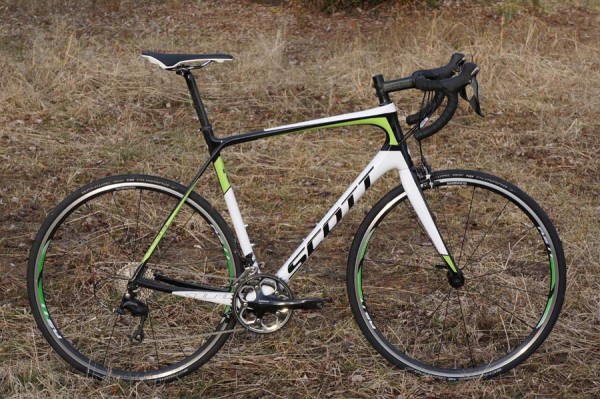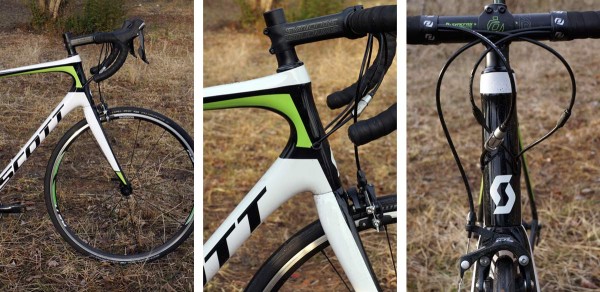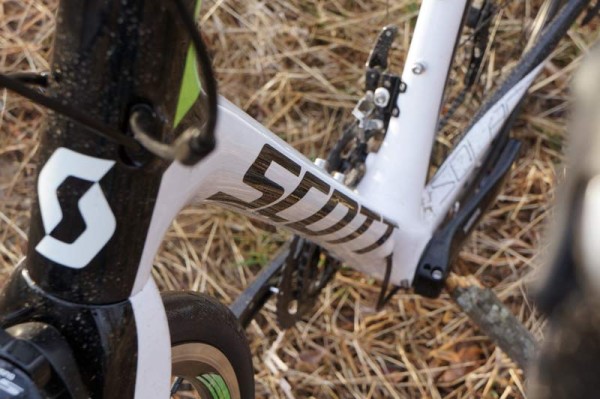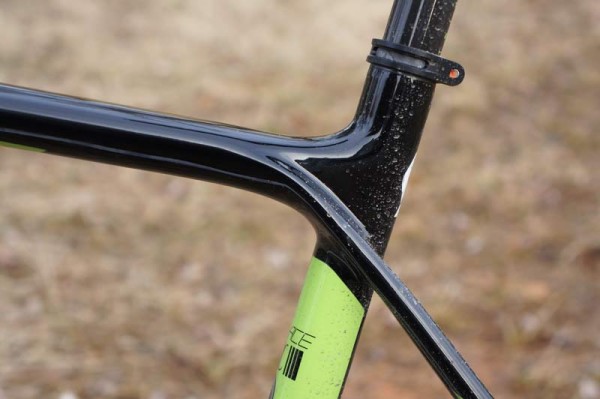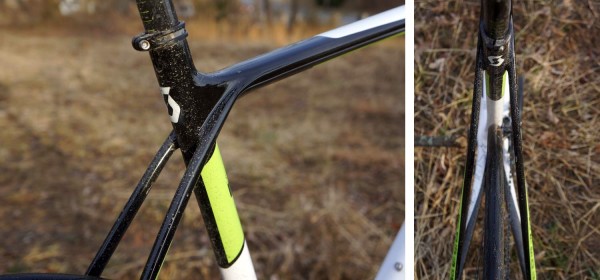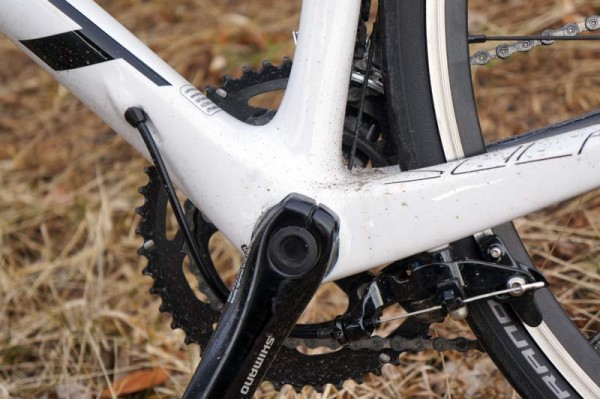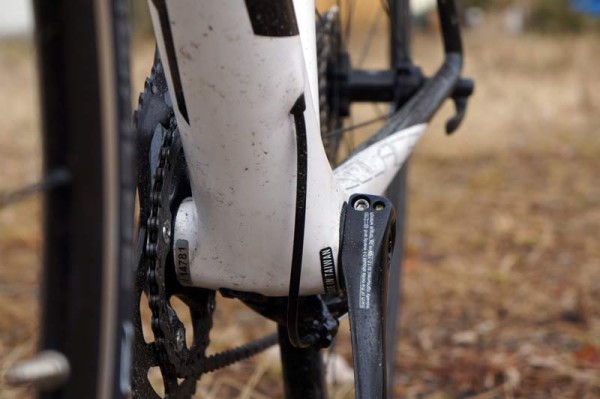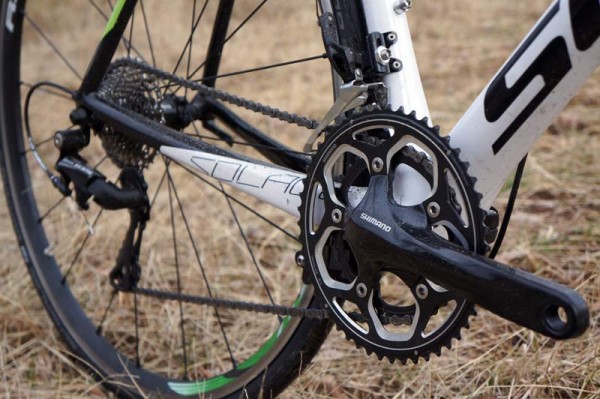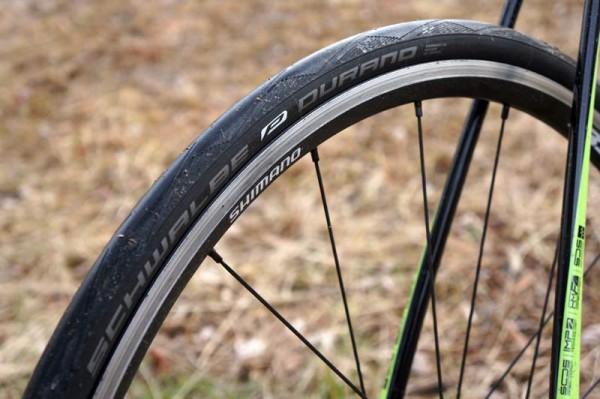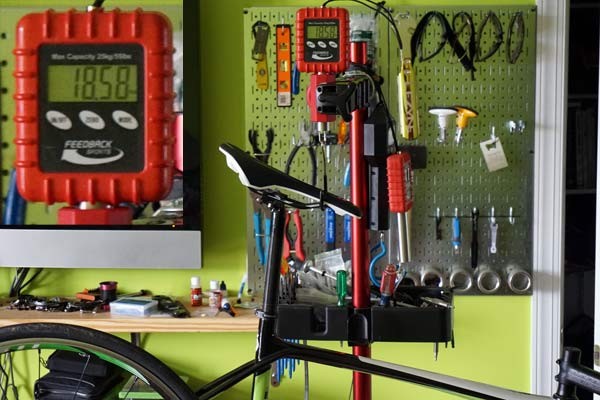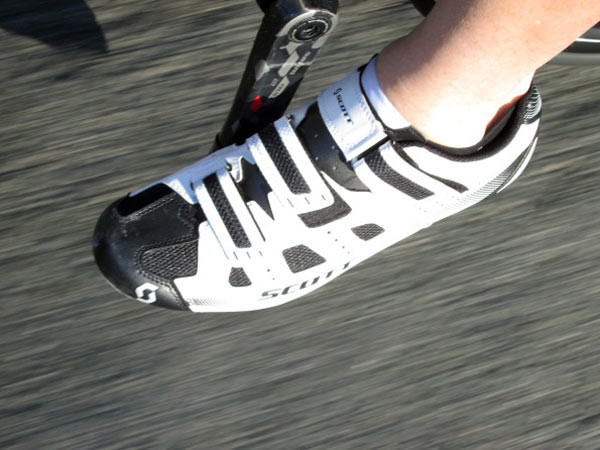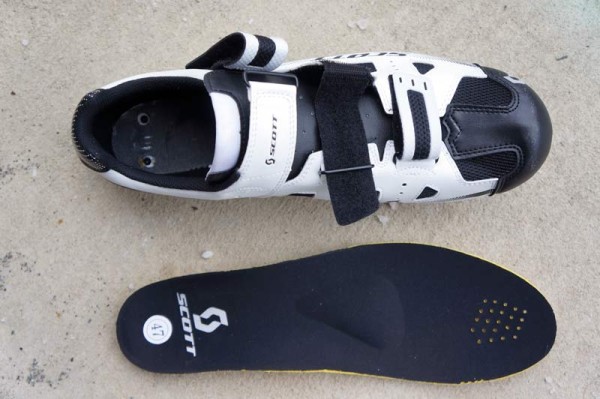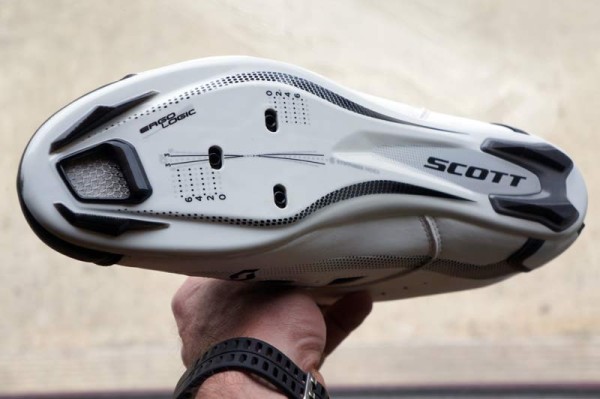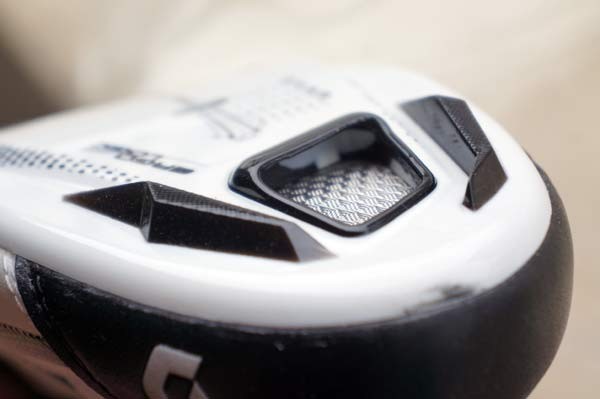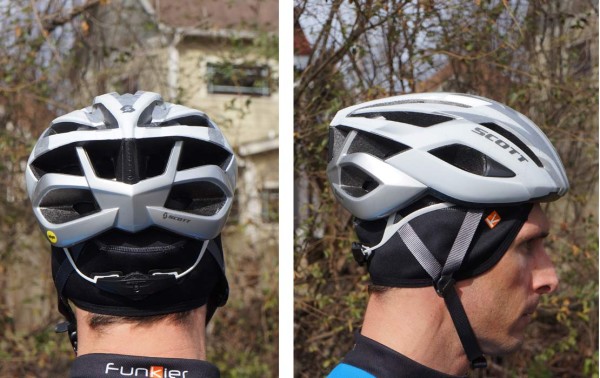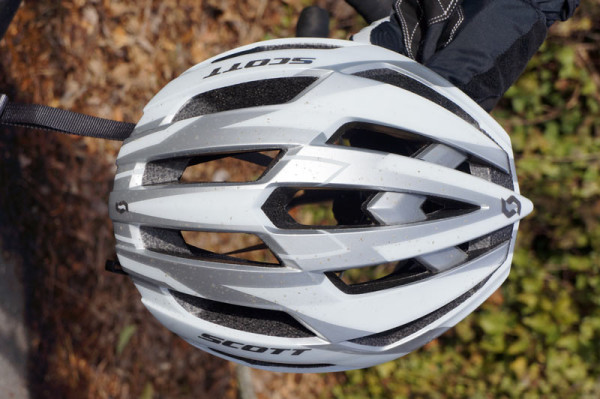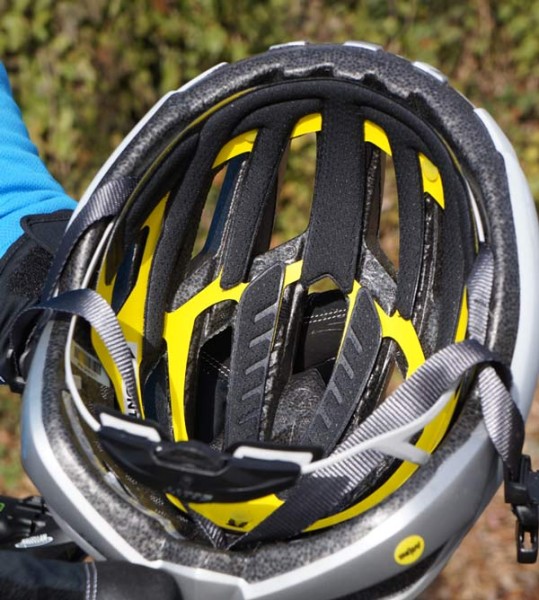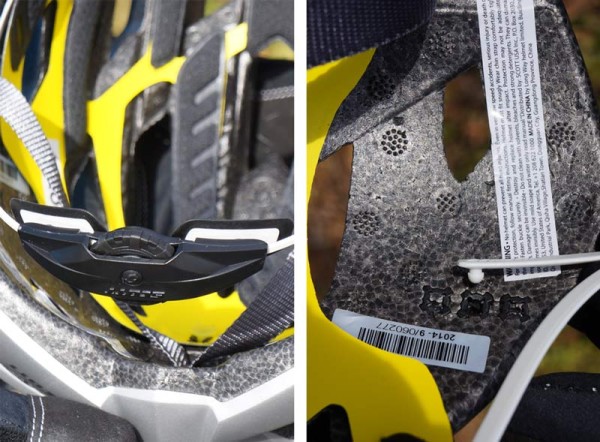In some respects, the road bike category is getting more diversified, what with gravel and adventure bike joining the endurance, fondo, crit and racing road bikes on the showroom floor lately. In others, it’s consolidating with the clever use of design and materials to produce bikes like the Scott Solace that excel across a wide range of uses.
Designed as their performance endurance bike, the Solace’s frame blends thin, bump absorbing seatstays with oversized head tube, down tube and chainstays to direct all of your pedaling effort to the cassette. And geometry that favors longer distance riding without wandering. The result is a bike that’s as fast as you are, stable and comfortable, which seems to be the right mix for most pavement pounders.
Even better, it’s very affordable…
Since our review bike has left the building, the Scott Solace lineup has switched to all disc brake models for 2016. While the braking performance was perfectly fine here, there’s more than improved stopping to be gained from the switch, as you’ll soon see. During Scott Week this summer, the final spec was up in the air, but they are going with the flat mount disc brake standard and using spacers to accommodate the larger (and arguably more appropriate) 160mm rotors front and rear.
Otherwise, the frame carries over from 2015 to 2016 unchanged. That means the headtube is still taller than you’d find on a race bike, but the larger cross section behind it keeps it stiff without going wide. It’s not exactly an aero bike, but there are aero nods in the frame…like the thin frontal area (thanks in part to sticking with a straight 1-1/8″ steerer) and quasi-foil shaped downtube:
Contributing to the comfort and the excellent aesthetics are seatstays that flow into the top tube. They’re connected, so the aren’t exactly stretching the amount of tube that’s able to flex, but they do contact the seat tube lower to reduce direct transmission of bumps to your butt. Combine that with a 27.2 post and things are well muted by the time it gets to the saddle.
Even with rim brakes, the seatstays were kept thin and compliant and wide open for larger tires. How? By putting the caliper under the chainstays, letting them tune the seatstays for comfort…and letting that feature carry over unchanged for 2016’s switch to disc brakes.
The rim brake’s cable popped out just in front of the BB, the disc brakes will stay internal until half way back on the chainstay. You’ll likely still be able to find rim brake versions in dealers for a bit, and I enjoyed this one, but discs make way more sense for this style of bike. Braking for sure, but also this:
Thanks to the Tektro brake’s cable pull design, there was no room for a Stages Powermeter to work on the Shimano cranksets. You won’t have this problem with disc brake bikes. If you’re looking for any bike with a bottom-mounted rim caliper and plan on using a crank-based power meter with any sort of unit attached to the inside of the crank arm, it’s worth testing fit before buying.
The pressfit 86 BB is the center of their “Power Zone”, essentially the bottom half of the frame that’s optimized for stiffness over compliance, and gives a wide platform for the downtube, seat tube and stays to spread wide.
Behind the BB is a bit of a shelf that could catch a little sand, and there’s not nearly as much tire clearance at the chainstays. The bikes are spec’d with 700×28 tires, though, with room enough for any crud you’re likely to find on the road to slip through.
Our test bike was the Solace 30, a very reasonably priced bike that, when paired with the Scott cycling shoes and helmet below, is under $2,400 for the ready-to-ride package (just add pedals). That’s with a Shimano 105 group and RS500 cranks, a complete Syntace alloy cockpit and Schwalbe Durano tires.
Pricing has gone up a bit with the addition of Shimano’s hydraulic disc brakes. The entry level Solace 20 bumps things up a bit further with a carbon seatpost, too, and starts at $2,799 with an otherwise equivalent spec to what’s shown here.
The frames start with their HMF/IMP carbon and construction, moving up to the higher end HMX/IMP Superlight with the Dura-Ace equipped $7,799 Solace Premium. But all get the same design features like this slick cable (or wire) exit for the rear derailleur. An important point here is that Scott’s base level carbon Solace still feels lively. Sometimes, big brand’s low-end carbon bikes end up feeling dead because they’re densely layered with lower end fibers or there’s less attention paid to the layup. Here, even the base level Solace had character, providing the right feel to keep you tuned in, but without transmitting road buzz. For me, that’s a major accomplishment and one that should put it on anyone’s short list regardless of budget.
Syncros, which has long made very light high performance parts, has been the housebrand at Scott since being acquired in 2012. That means good stuff on their bikes that’s all color matched.
At 18.58lb for the size 58 (XL), the bike is respectably weighted for a base-level endurance road bike. Fortunately, the weight remains about the same with the switch to thru-axles and disc brakes for 2016, meaning it’s all upside.
RIDE REVIEW
I spent several months with the Solace and covered all manner of local roads, from glass smooth to pockmarked and rough, even slipping through a couple gravel shortcuts on occasion. It proved a capable companion for “let’s just turn here and see where it does” type rides and a few faster group rides where there was no doubt where we were headed (straight to the pain cave, usually). This style of bike suits my riding style, which is long and slow most days, but it hustles on demand and steering is precise without requiring constant attention. My only complaint was a rattling noise from the internal cable housing when riding on really rough roads or rumble strips. It wasn’t constant, and it could likely be silenced if you’re willing to pull the BB or fork and work a couple zip ties around the housing, but still annoying.
The ride quality is very good, very comfortable. And even with the most affordable build spec, there’s nothing that screams out for immediate upgrade. Such is the golden age we live in that bikes around $2,200 ride like super bikes from just a few years ago. And, assuming you go with the new disc brake models, they should handle the future pretty well. I’d recommend the Solace to anyone looking for a solid yet light frame upon which to log many miles, particularly those poking around for their first such road bike.
ACCESSORIES
Along with the bike, Scott sent their Comp road shoes ($99) and ARX Plus helmet with MIPS ($149). Add the bike for $2,149, and you’re on the road for under $2,400. As you can see from the cranks above, I ended up riding the shoes on more than just the Solace. It’s easy to get spoiled by all the high end stuff we get to test, but riding a $99 pair of shoes is a pleasant reminder that tech, materials and manufacturing processes have trickled down so quickly and so thoroughly that even the entry level stuff is darn nice these days.
Costs are kept down by sticking with three Velcro straps, which work great. The upper strap’s loop sits on the outside of the foot, helping to wrap the foot into the shoe. I felt no hot spots or pressure points across the top or bottom of my foot.
The base is a nylon and glass fiber sole with gaping front air scoop and front and rear traction pads. They’re not the stiffest shoes in the world, but they are very comfortable and rigid enough for spirited riding. Scott rates them a 6/10 on their stiffness scale, which sounds low considering they never felt flexy or weak on the bike or trainer. In fact, these have become my default indoor trainer shoes, which means they’re still getting used outdoors, too, when I’m too lazy to move pedals around.
The scoop and upper mesh vents did a good job of keeping my feet comfortable on hot summer days.
Weight is good, too, at just 647g for the pair.
The ARX Plus helmet sits at the top of their helmet range and comes in both road and mountain bike versions (add a visor and it’s for MTB). It’s feature rich, comfortable and adds the MIPS rotational injury mitigation system.
Twenty vents, most of which are massive, keep the air flowing. I rode it through last winter (with a very warm beanie) and into summer and those vents worked.
In-mold construction is standard on most cycling helmets now, so in addition to proper fit from a smooth dial in the cranium cradle and a height-adjustable retention mech, additional safety comes from the inclusion of MIPS:
The yellow layer is slowly becoming ubiquitous and allows the inner liner to breakaway from the helmet when the impact comes from an angle. This, in theory, lets the helmet rotate on its own slightly, rather than yanking your head (and thus brain) around for a spin with it. That should reduce the amount of trauma to your gray matter and make it less likely you end up with a concussion or worse.
I forgot to weigh this one, and it’s living with my cousin several states away now, but it’s not heavy. Typically, MIPS adds a bit, but the ARX Plus never unduly imposed itself on my neck muscles over long rides. In fact, it’s very comfortable and stays in place well. It also seemed to accommodate a wide variety of sunglasses from Oakley, Rudy Project, Smith and others, which is important.
